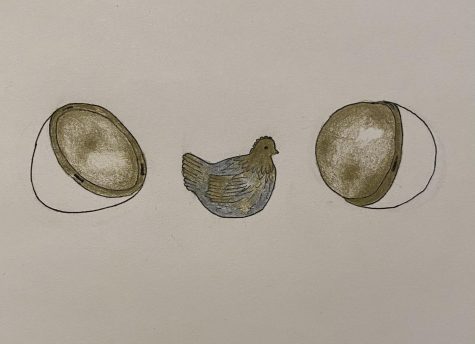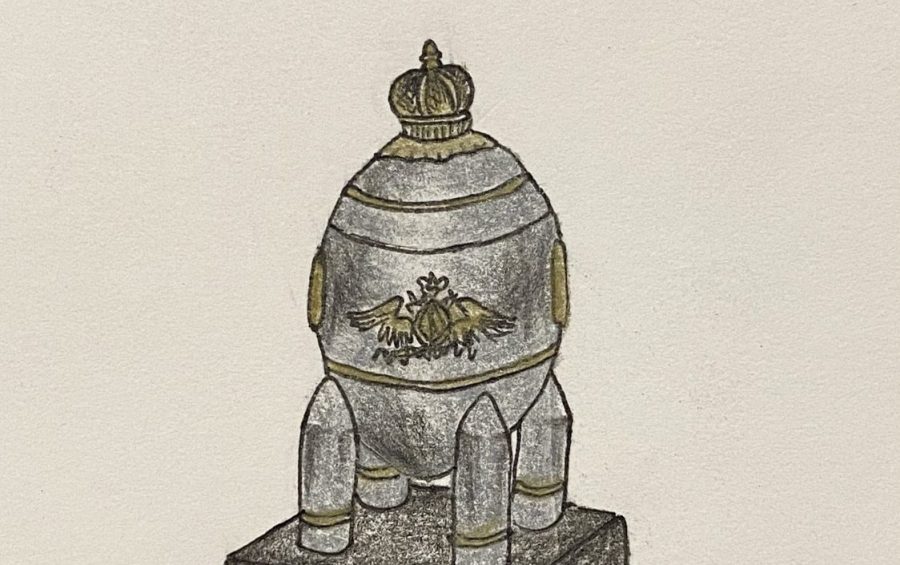The History of Faberge Eggs: The Easter Egg Hunt That Followed a Dynasty’s Collapse
The elaborate Easter tradition that began with Emperor Alexander III of the Romanov Empire led to a mystery that remains unsolved.
The Steel Military Egg was the last Imperial Egg.
Despite some controversy surrounding chickens and eggs, the egg inarguably symbolizes new life and fertility. Several Asian cultures regard the egg as an emblem of luck, and eggs were commonly thought to be representative of death and rebirth in the predynastic period of Egypt.
A similar ideology surrounding the egg exists in Christianity, as eggs are associated with Spring and creation. This idea birthed the custom of the Easter egg, representing the empty tomb of Jesus’s resurrection. Some believe the tradition began with the early Christians of Mesopotamia and slowly spread through the Orthodox Churches to the Catholic and Protestant Churches, while others believe it originated in Western Europe during the Middle Ages, when the Catholic Christians were banned from eating eggs during Lent.
The tradition eventually evolved into many forms, some decadent and some quaint. The form that people are most often acquainted with is the Easter egg hunt that ensues on Easter morning, where children search for hidden plastic eggs filled with chocolates and other treats. One of the more lavish traditions that evolved from the Easter egg was the Imperial Faberge Egg series.
The Imperial Easter Egg series began in 1885 when Czar Alexander III commissioned the jewelry firm, Faberge, to create an Easter gift for his wife, Tsarina Maria Feodorovna. At the time, the company was run by Peter Carl Faberge, who supervised the creation of the present: an Easter egg made of solid gold and coated in opaque white enamel. The egg had a similar effect to a nesting doll, housing layers of chambers within it, each one decorated intricately so as to create a new surprise upon opening. Inside the egg was a golden yolk, which opened to reveal a golden hen, which in turn held a replica of the imperial crown and a precious ruby pendant.

Feodorovna enjoyed the Easter gift immensely, leading Alexander III to place the annual gifting duty into the hands of Faberge himself. The Czar requested that a unique egg be crafted every Easter, each one containing a surprise within. The eggs were kept hidden to everyone but the creators as they were being made; even Alexander had little idea of what the egg looked like or held.
The gift became an increasingly elaborate tradition that was eventually passed down to Alexander’s son, Nicholas II. Ten eggs were produced under Alexander between 1885 and 1893, and forty were created under Nicholas, who upped the ante by requesting two eggs per year rather than one. Nicholas II presented the two eggs to his wife and mother on Easter from 1894 to 1916.
Alas, the annual routine had to come to a close eventually, and unfortunately for the Romanov family, their reign fell along with it. The Romanov rule had been present for three centuries, but the Russian Revolution of 1917 brought a violent end to the monarchy. Led by Vladimir Lenin, a leftist revolutionary, the Bolsheviks overthrew the imperial government and seized St. Petersburg.
Exiled from the city, Czar Nicholas abdicated the throne and the Romanov family was executed in 1918. Faberge’s workshop disbanded due to the large number of workers leaving to fight in World War I, and Faberge himself also left the business behind to escape to Switzerland. The fifty imperial eggs were left abandoned in St. Petersburg, where many were looted and taken to Moscow.
The Bolsheviks disregarded any artistic value of the Faberge eggs, instead seeking financial gain from them. As a result, many of the eggs were sold to high-paying buyers looking to add the pieces to their private collections, while others were thought to have been destroyed in the tumultuous revolution. A worldwide Easter egg hunt eventually ensued in an attempt to find all 50 of the imperial eggs.
Ultimately, 42 of the 50 eggs were found and displayed at museums around the world, the most concentrated collections at the Kremlin Armoury Museum in Moscow with ten and the Faberge Museum in St. Petersburg with nine. A few of the eggs are owned by prominent figures: the Queen of England owns three, and the former Emir of Qatar, Hamad bin Khalifa Al Thani, owns one.
Eight of the eggs’ whereabouts remain unknown, and the mystery of their location intrigues both art historians and puzzle-solvers alike. When Stalin began to sell the eggs in 1927 to obtain foreign currency, the Hen with Sapphire Pendant, Cherub with Chariot, Necessaire, Mauve, Empire Nephrite Royal Danish, Alexander III Commemorative, and Third Imperial Egg all vanished with no explanation.
The Imperial Faberge Necessaire Egg, crafted in 1889, was sold in 1952 to a buyer who was listed as ‘A Stranger.’ The egg disappeared with the anonymous client, and has not been seen since.
However, hope remains, as Imperial Faberge Eggs thought to have been lost forever have resurfaced as recently as 2012, almost a century after disappearing.
The Third Imperial Egg was found on a man’s kitchen counter, where it had been wallowing for years. He had bought it at an antique store in the Midwest, assuming it was valuable enough to melt down and make a decent sum of money. Out of sheer curiosity, he decided to Google the words inscribed on the side of the egg, “Vacheron Constantin,” and came to realize his kitchen decor was an authentic Faberge Egg worth around $33 million.
There are plenty of theories regarding the whereabouts of the eight missing Faberge eggs, some of which have been spawned by Bronx Science students.
Probably the most widely accepted of the theories was echoed by Allie Smithie ’22, who asserted that they were “either lost in World Wars and the revolution or are in private collections.” Elizabeth Obrusnik ’22 disagreed, believing the eggs to be hidden “inside a tree in Belarus.”
Montana Lee ’21 theorized that “the eggs are in Putin’s secret $1.4 billion mansion on the Black Sea, on proud display in many grand rooms. The eggs are missing, and what better place than in a palace that the very rich Putin denies exists?” And then there’s Andrew Edelmann ’22, who speculates that the eggs reside “in a whale’s stomach somewhere.”
“The eggs are in Putin’s secret $1.4 billion mansion on the Black Sea, on proud display in many grand rooms. The eggs are missing, and what better place than in a palace that the very rich Putin denies exists?” said Montana Lee ’21.
Ellora Klein is a Copy Chief for ‘The Science Survey.' She enjoys exploring different perspectives through writing, editing, and reading. Ellora chose...

